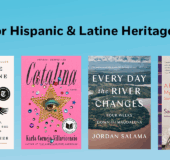Introduction: White Lies Matters
Section I: Memorials
Monumental Basics
Chapter One: Memorials: The Lost Cause Won
Memorial Timeline
Pre-1890: A Mixed Bag
1890-1920: The First Memorial Boom
Chapter Two: Memorials: The Lost Cause Keeps Winning
Memorial Timeline
1920-1980: Living Memorials and Dying Cities
1980-2010: The Second Memorial Boom in Three Acts
2010-Present: Tumbling Down and Rising Up
Section II: Museums Museum Basics
Chapter Three: Museums: White Temples Emerged
Museum Timeline
Pre-1870: Cabinet of Curiosities
1870-1940: The First Golden Age of American Museums
Chapter Four: Museums: White Temples Reshaped?
Museum Timeline
1965 - 2019: From King Tut to Emmett Till
The Summer of 2020
Section III: Patriotic Practices
Patriotic Practice Basics
Chapter Five: Patriotic Practices: Allegiance Gets Pledged
Patriotic Practices Timeline
1776-1865: A Fraught Beginning
1866-1917: Patriotism from the Ground Up
Chapter Six: Patriotic Practices: Allegiance Gets Paid For
Patriotic Practices Timeline
1917-1976: Federally Mandated Patriotism
2001-2021: Paid Patriotism and Outrageous Refusal










